Source: The Conversation (Au and NZ) – By Duane W. Hamacher, Associate Professor, University of Melbourne
This year’s Mabo Day, June 3, was a special day for Indigenous astronomy. That was when the International Astronomical Union officially accepted five new asteroid names that honour a selection of Aboriginal and Torres Strait Islander communities, elders and academics whose work has been particularly influential.
The move follows similar commemorations in 2019, the International Year of Indigenous Languages, when a plethora of stars, exoplanets, planetary features and asteroids were given Indigenous names. They included six stars that received names from the Wardaman (NT), Booring (Vic) and Kamilaroi/Euahlayi (NSW) communities, as well as a star and planet named Bubup (“child”) and Yanyan (“boy”) – names derived from the Boon Wurrung language of Melbourne.
Read more: The stories behind Aboriginal star names now recognised by the world’s astronomical body

Asteroids (sometimes also called minor planets are large rocks in the Solar system, ranging from 10 metres to more than 100 kilometres in diameter. Most are found in a region called the asteroid belt, between the orbits of Mars and Jupiter, and are only visible with a powerful telescope.
Here are the five asteroids that have been newly named in recognition of influential Aboriginal and Torres Strait Islanders.7546 Meriam
Formally known as 1979 MB4, this is a 2km-wide asteroid of the Flora family in the asteroid belt’s inner region. It is 2.3 times farther from the Sun than Earth is, and takes 3.5 years to complete one orbit.
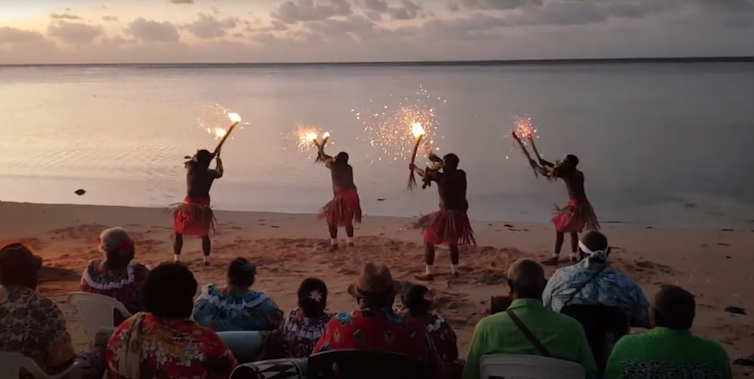
The Meriam are an Indigenous Australian group of people in the islands of the eastern Torres Strait, who are united by a common culture and language: Meriam Mir, Australia’s only Papuan language.
Meriam people developed and maintain complex systems of astronomical knowledge centred around Tagai, a great warrior who is central to their Creation and identity. Meriam star knowledge has featured in academic papers, educational curricula, planetarium displays, a forthcoming commemorative coin, and the upcoming Werner Herzog film Fireball.
Read more: A shark in the stars: astronomy and culture in the Torres Strait
7733 Segarpassi
Formally known as 1979 MH4, this is a 1.9km-wide asteroid in the main asteroid belt. It is 2.4 times farther from the Sun than Earth is, and its orbit takes 3.7 years.
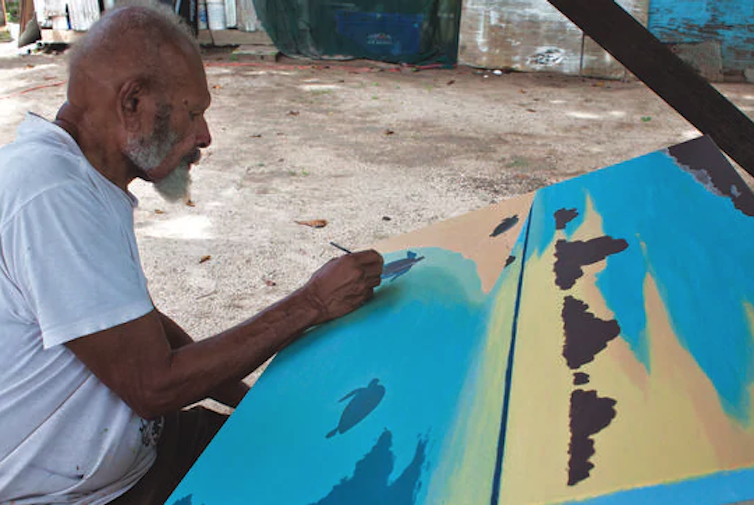
Segar Passi is a Dauareb man and highly respected Senior Elder on Mer (Murray Island) in the eastern Torres Strait. He is an award-winning artist who shares extensive traditional knowledge about Meriam ecology, meteorology and astronomy. Uncle Segar’s paintings reflect careful observations of the local environment, using an extensive colour palette to reflect and embed deep layers of knowledge about ecology, geology, astronomy, and culture.
Uncle Segar has coauthored academic publications featuring Meriam astronomy, including papers on music and astronomy in the Torres Strait, how Meriam people observe the twinkling stars to predict seasonal change, and the link between death and Maier (bright meteors) in Meriam traditions.
7630 Yidumduma
Formally known as 1979 MR2, this 6.4km-wide asteroid of the Koronis family is in the outer region of the asteroid belt. It is thought to have formed 2 billion years ago from a major collision between two larger bodies. It takes 4.8 years to orbit the Sun.
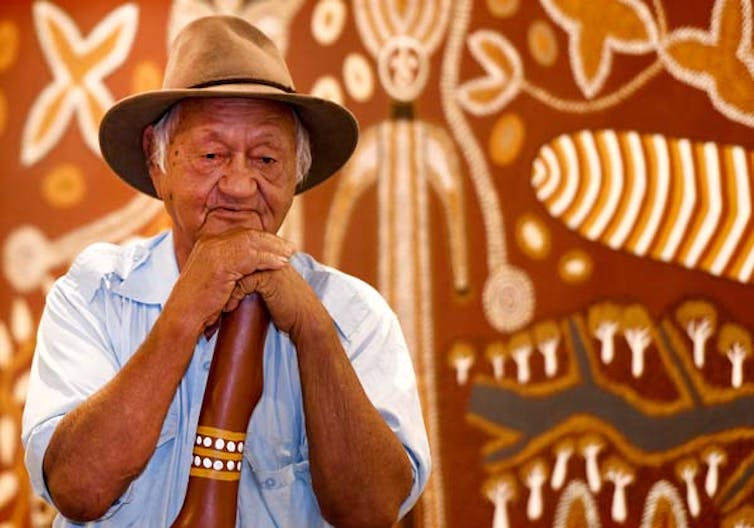
Bill Yidumduma Harney is a Senior Wardaman Elder near Katherine, NT, who grew up in a traditional Aboriginal community. He is a globally renowned artist, storyteller and musician and was fully initiated in Wardaman Law. He has shared the rich and complex astronomical systems of Wardaman astronomy in his books Dark Sparklers and Four Circles, as well as academic papers on navigation.
Uncle Yidumduma was featured in the Message Stick program Before Galileo and the Warwick Thornton film We Don’t Need a Map. Four of the six IAU-approved Aboriginal star names come from Yidumduma’s star knowledge.
Read more: Aboriginal traditions describe the complex motions of planets, the ‘wandering stars’ of the sky
7809 Marcialangton
Formally known as 1979 ML1, this 4.25km-wide asteroid is in the main asteroid belt and has a 3.6-year orbit.
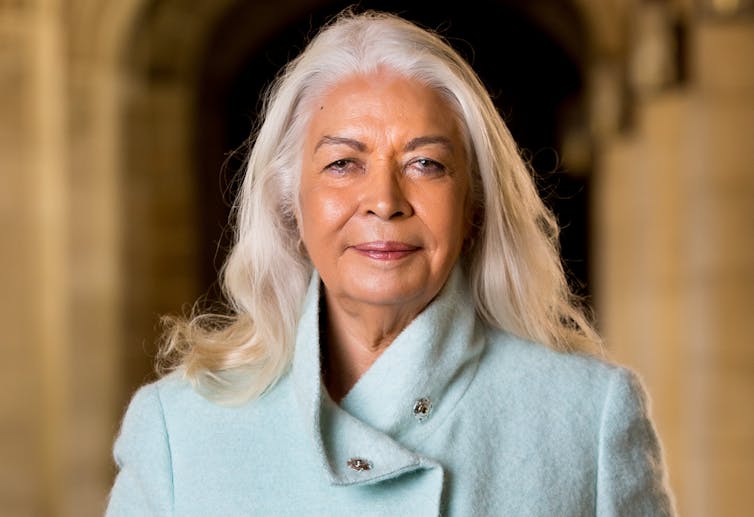
Marcia Langton AO is Redmond Barry Distinguished Professor, Associate Provost, and Foundation Chair of Australian Indigenous Studies at the University of Melbourne. Born in Brisbane, she is a Yiman and Bidjara woman whose traditional country is central Queensland. She has been involved in the fight for Aboriginal rights, Native Title, and was the first Indigenous graduate in anthropology at ANU before completing a PhD in geography at Macquarie University.
In 2018 she spearheaded the Indigenous Knowledge Resources for Australian School Curricula Project to incorporate Indigenous Knowledge of fire, water, and astronomy into the Australian National Curriculum for all subjects in primary and secondary school.
Read more: Beyond the morning star: the real tale of the Voyagers’ Aboriginal music
7547 Martinnakata
Formally known as 1979 MO4, this is a 3.32km-wide asteroid of the Koronis family in the outer region of the asteroid belt. It is thought to have formed 2 billion years ago from a major collision between two larger bodies and takes 4.8 years to complete an orbit.
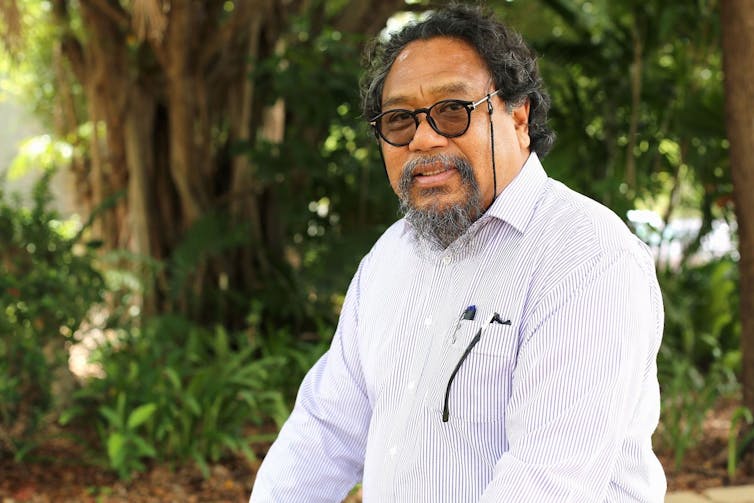
Martin Nakata AM is a Professor and Pro Vice-Chancellor (Indigenous Education & Strategy) at James Cook University in Townsville, Australia. He is an Indigenous Torres Strait Islander whose traditional country is the island of Naghir (Nagi). He is the first Torres Strait Islander to earn a PhD in Australia and his work focuses on the development of the Cultural Interface, which he describes in his book Disciplining the Savages, Savaging the Disciplines.
Professor Nakata leads research and the development of tech programs at the interface of Indigenous astronomy and Western astrophysics and worked to develop collaborations between tech companies, libraries and universities to enable Indigenous communities to share their astronomical knowledge on their terms.
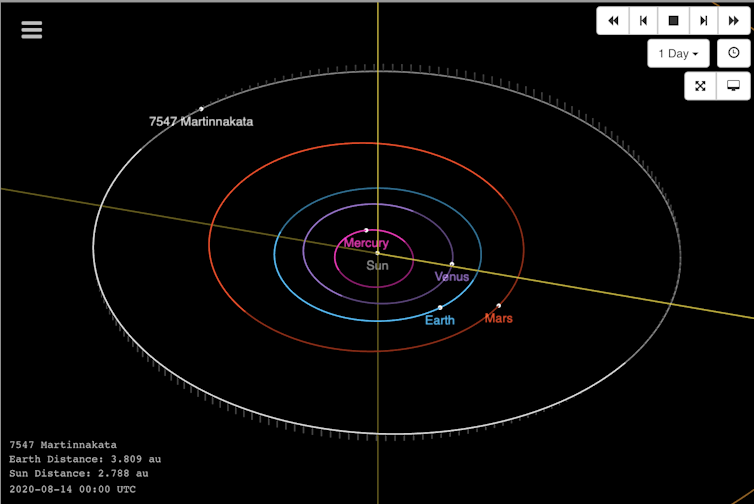
– ref. From 7809 Marcialangton to 7630 Yidumduma: 5 asteroids named after Aboriginal and Torres Strait Islander people – https://theconversation.com/from-7809-marcialangton-to-7630-yidumduma-5-asteroids-named-after-aboriginal-and-torres-strait-islander-people-144596







